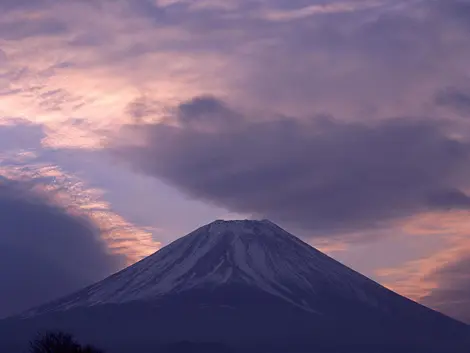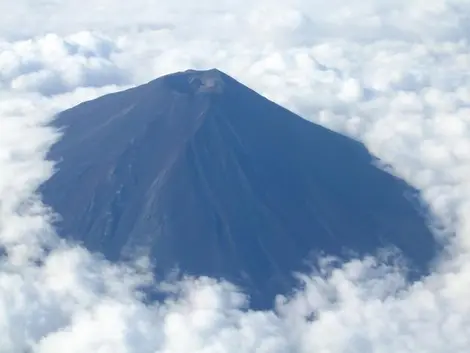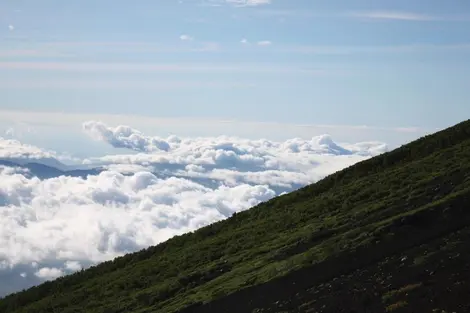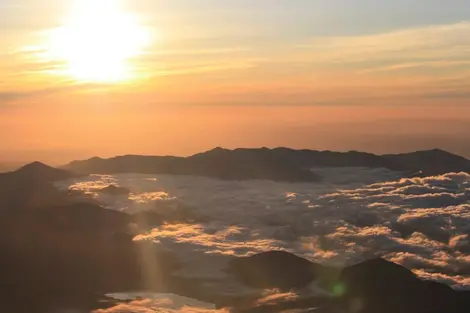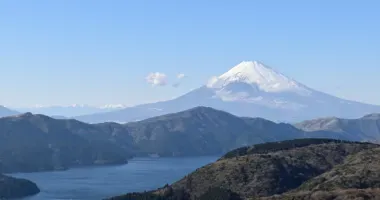Mount Fuji from the 5th station to the summit 富士山
At the top, the rising sun
Kawaguchi-ko is the fifth of the ten "stations" of Mount Fuji. Buses transport floods of tourists here, climbing with difficulty to 2,300 meters above sea level, and eventually arrive...
The buzzing hive of activity of Kawaguchi-ko almost looks like an amusement park with just one ride. Unfortunately, Mount Fuji does not have the gift of ubiquity: it cannot be climbed and admired at the same time.
So, it's time to set off. The path gets steeper as you climb, and the panoramic view is revealed as you pass the stages that mark the route. Sixth, seventh, eighth station... you'll see sparkling lakes below, and clouds above, surrounding the peaks.
Climb to the summit with Voyagin.
The sleepy, snow-covered mountain
Since the eighteenth century, Fujisan has been asleep. Only the volcanic soil reminds us that at the top there is a crater. Trees and shrubs disappear the higher you get, replaced by ice and snow.
There's a myth: in the land of the rising sun, the view of the sunrise from the top of Mount Fuji brings ecstasy. In the tourist season, from July 1st to August 31st, the climb is so popular it's often made in a "queue". Each person plans their hike based on their time of arrival: the first fiery, blood red and pink streaks appear in the sky at around four thirty in the morning.
Two ways to climb
There are two main options for visitors: starting the climb in the afternoon and taking a break at the eighth station in an expensive shelter, not very comfortable but with undeniable charm, and then undertaking for the last hour of walking in the night. Others leave Kawaguchi-ko at around ten in the evening, equipped with headlamps to guide the way, walking in line and heading into the night like an army of fireflies to conquer the summit.
Both experiences have their advantages, but starting in the afternoon you are able to enjoy the view during the ascent in daylight, and you can also contemplate the sunset, much less lauded but equally as memorable as the sunrise. You will cross a border of fog and reach the layer of gray seen from at the bottom. Suddenly, towards the seventh station, blue sky appears, and the region of Hakone is revealed between two clouds, the horizon displays its most beautiful assets.
Enjoy mount Fuji from a Lake Ashi cruise with Voyagin.
Up above
Once you've passed the final torii, the cold hits you. The excitement of the climb subsides, at the summit there is wind and shivering, and now there's nothing to do but wait. Soon it begins, the sky is set ablaze, the exclamations of tourists punctuate the transition from the dark and quiet blue to fiery orange, piercing the backdrop where the sky mingles with the sea, to Tokyo and its millions of lights in the distance.
Below, the mountains remain shrouded in darkness, hidden among frothy clouds that seem to be boiling over. Then comes the pale, pink light, a colorful messenger announcing the rise of the long-awaited sun. Admiring cries and thousands of clicks of cameras finally break the silence and night. The day begins, and with it, the tedious descent...





